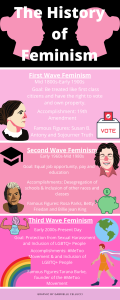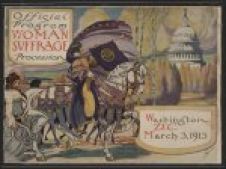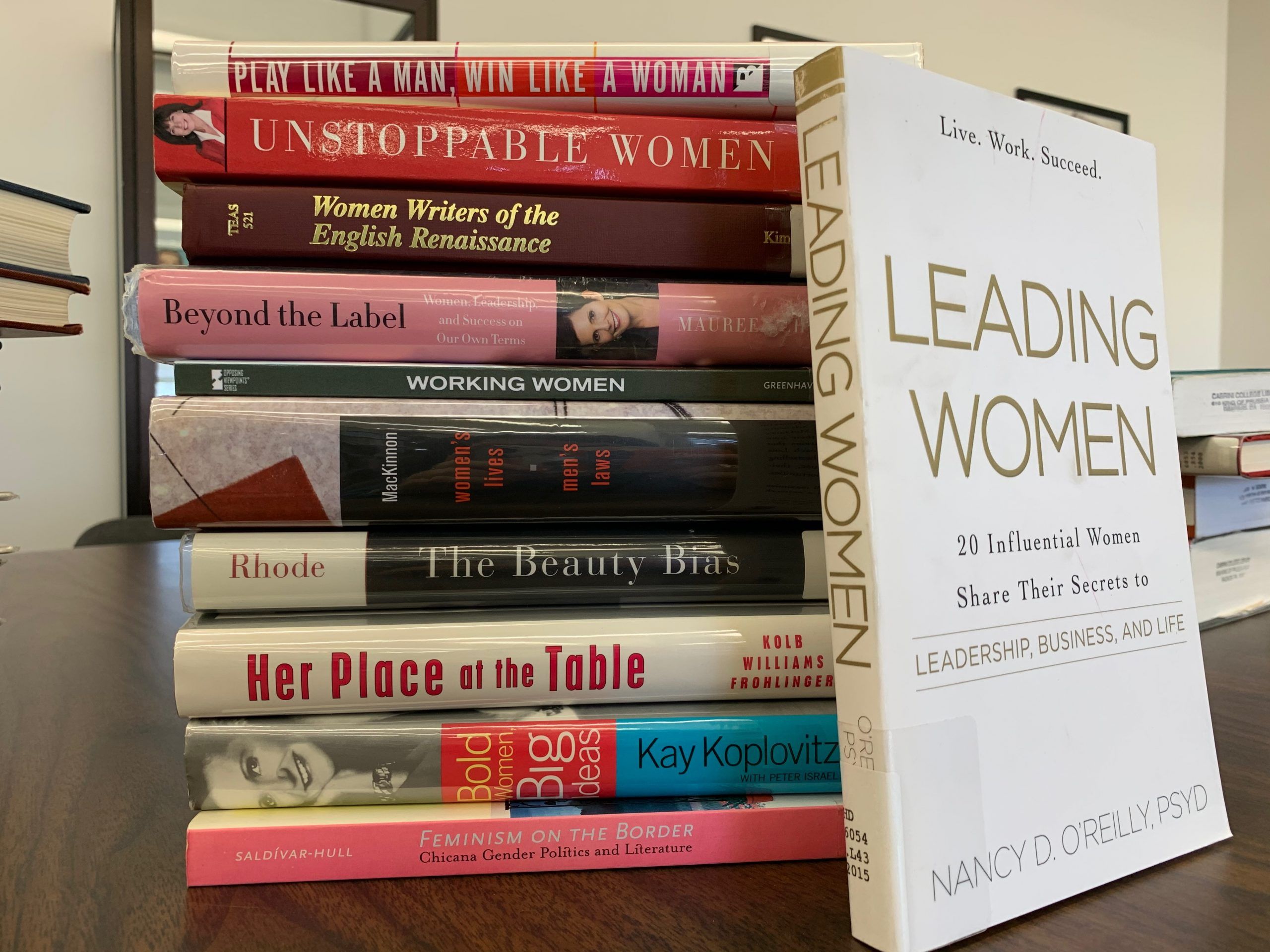Growing up as a child, all anyone wants to do is play with their friends. But what happens if you can’t play with your friends because of your gender?
For some people, that may be hard to imagine. However, for Allison Clark, that scenario became a reality. As a child, she grew up with mostly male friends. Clark wanted to play lacrosse with her friends, but was told that she wasn’t allowed to because her friends were male and she is female.
“My dad was my [lacrosse] coach,” Clark said. “I started playing lacrosse when I was 6…I wanted to play with them. I wanted to scrimmage with them. I wanted to play their game because it seemed so much more fun.”
Clark continued to say how the boys played lacrosse with longer sticks and were able to play a little more roughly compared to the girls. She was absolutely devastated as a child being told that she couldn’t play lacrosse with the boys simply because she was a girl.

“I just remember feeling as though it was inequal,” Clark said.
Until then, Clark took gender equality literally.
“I was told that I could be anything,” she said.
After being told that she could be anything, Clark remembered her immediate response was wanting to be president. Another dream shot down because she was a girl was being president. She remembered being told that she couldn’t be president because there had never been any female presidents in the history of the United States before, which she was dumbfounded by.
“Once you begin to see it as a young girl, it begins to be really debilitating,” Clark said. “You begin to realize that there are limits to the things that you can do despite everyone telling you that the sky’s the limit, but is it?”
As the years went on, Clark began to identify as a feminist. She remembers in college hanging out with her now-husband and his fraternity brothers one night. Knowing that she was (and still is) a feminist, one of the fraternity brothers asked her why she was a feminist and why she hated men.
“I realized that this was a moment. This a turning point,” Clark said. “I could either say that ‘Uh no. I’m not really that much of a feminist’ and liken myself to the boys and be a little bit more palatable. But I wanted to be more.”
Clark decided that she was not going to act in a way to make herself more likable to the guys because she wanted to show what a feminist really is. She wanted to be loud and “unacceptable.” She decided to turn the conversation around on the fraternity boys by asking them why they thought feminism was about women hating men. She asked them why did being a feminist imply being a man-hater. They responded by saying that was what everyone said feminism was. At the time, people had many associations with feminism such as being a lesbian, angry and all sorts of other things, but primarily a man-hater.

According to a 2018 study by Gen Forward on Millennials’ views of feminism, only 22 percent of women identified as feminists, while 13 percent of women didn’t identify as feminists in any way. However, 62 percent of women said that they didn’t identify as a “traditional feminist” but support women’s rights and equality.
So if women are willing to support feminism views, why not actually call themselves a feminist?
To better understand what feminism is and how it differs from man-hating, one would need to examine the history of feminism itself.
“When we talk about feminism, we’re talking about people’s right to equality in custom and in law and abilities to control their bodies and live freely as they see fit,” Dr. Joseph Fitzgerald, a U.S. history and political science professor said. Fitzgerald has been working at Cabrini University since the fall of 2014.
The first wave of feminism in the United States dates back to the middle of the 1800s. This first wave of feminism primarily focused on women wanting to have the same rights as men and be seen as first-class citizens, for example, with the right to vote and own property like men. This phase continued through the Civil War and Reconstruction. It came to a pinnacle in 1920 when the 19th Amendment was passed, which granted women the right to vote in elections.

“There was a lot of political protests that was rising and that rising left an open platform for that first wave of feminism,” Dr. Darryl Mace, the chairperson of history and political science, said. Mace has been teaching at Cabrini University for 14 years.
Unfortunately, the first wave of feminism focused only on white women’s rights. Their agenda did not include the rights of women of color because this wave of feminism began prior to the Civil War and continued through to Reconstruction. This ultimately caused a rift between white women and black women, which wouldn’t begin to be patched until the second wave of feminism.
Before the second wave of feminism began, feminism itself in the United States had reached a lower point. Feminism was still occurring, but the Great Depression and World War II took precedence in the media over feminism, along with the Cold War and anti-McCarthyism in the 1950s.

The second wave of feminism began around the 1960s in the United States, where a rise in protest movement begins with the Civil Rights Movement leads a pathway for the second wave feminist movement to begin. The second wave of feminism focused primarily on opening social, economical and political spaces. They wanted to be able to get any job that they wanted as men, attend bars and nightclubs without an escort, being paid the same amount of money and receive the same type of education as men because at the time, schools had classes that were only open to men.
“It’s like a bizarro world…If you had a penis, then you could get any type of job you wanted. But if you had a vagina, then you couldn’t. It’s as stupid as that,” Fitzgerald said.
The desegregation of men and women in Ivy League school during this second wave of feminism came when women-only colleges were desegregating among races, particularly for African-American women. According to Fitzgerald, it was because of African-American women during the second wave of feminism that feminism focused not only on female liberation but also on the liberation of women of color, of working-class women, and that of other groups. The second wave of feminism expanded the idea that the importance of feminism was not only about sex but also included different races and working classes as well.
However, the second wave of feminism had its flaws as well as the first wave of feminism. Even though the second wave of feminism was more inclusive of different races, it did not include women who identified with the LGBTQ+ community.
Fast forward to present-day America, the third wave of feminism has emerged and is even more inclusive than the second wave of feminism. This third wave of feminism includes transgender rights, gender identity and other LGBTQ+ rights and has recognized feminism on an international level.
“It sees the complexity of personhood,” Fitzgerald said in regards to the third wave of feminism.

An examination of the history of feminism shows that feminism itself has grown to be more inclusive of different races, gender identities, sexualities and women from other nations, but the message of feminism has stayed the same: to treat women as equals to men.
So why do some women hesitate to call themselves feminists?
Unfortunately, not everyone supports feminism and such terms like “man-hater” has slandered the meaning and cause of feminism. But what does the term “man-hater” mean?
According to AIESEC, “the correct word choice for a man-hater is a misandrist.” AIESEC states on its website that Merriam-Webster dictionary defines a misandrist as a person who is biased against men and has a hateful attitude towards men. Misandry is about wanting to change the power structure and have a matriarchy instead of a patriarchy.
What does this have to do with feminism?
According to BBC News, Dr. Christina Scharff of King’s College in London conducted her own research and “found associations of the term ‘feminism’ with man-hating, lesbianism or lack of femininity as a key factor in rejections of the label ‘feminist.’” Despite feminism being about wanting equality between men and women and wanting an equal power structure between the two sexes, many people have associated the idea of misandry or more commonly referred to as “man-hating” with feminism.
So where does the term “man-hating” come from?
“[It comes] from anti-feminist men,” Mace said.
Mace continues to say that the reason these men created this terminology was because they wanted to discredit feminists and their movement because those men were afraid of losing power. He said that the term caught popularity by that type of men having power in the media and utilizing it to counteract the feminist movement because they were disrupting the status quo.
“They wanted to disrupt the status quo because the status quo sucked,” Mace said.
Clark believes that women have to decide for themselves on how they want to claim the term “feminist” on their own and encourages women to look at the idea of feminism and see the equality side of feminism.

“I find so often that women will say things like ‘I’m not a feminist because I want to say at home and take care of my kids.’ And that’s feminist,” Clark said. “It’s progressive. It’s feminist. It’s strong.”
Clark continues to say that women have to look into the term “feminist” and come into it on their own terms. Clark discourages people from pushing others into being a feminist when they are not ready because it will further engrain their initial reaction to not want to claim the term “feminist” at all.
Clark is now a gender and bodies study professor at Cabrini University and has been teaching at the university since 2018. Clark is proud to now introduce young feminists to the same teachings that she herself had learned as a student at Cabrini University. She hopes that her students learn that the idea of feminism is believing that women and men can be equals because her definition of feminism means equality for all.




To the books shown above we should add:
Professing Feminism: Cautionary Tales from the Strange World of Women’s Studies (Patia)
Lying in a Room of One’s Own: How Women’s Studies Textbooks Miseducate Students (Stolba)
Vamps and Tramps (Paglia)
Spreading Misandry
Legalizing Misandry
Santifying Misandry
Who Stole Feminism
Spreading Misandry by Paul Nathanson and Katherine Young conclusively confirms that mainstream gender-feminism is based on man-hating both in ideology and application. The man-hating term comes from solid scholars who have studied the bigoted nature of feminism. Feminists must hate men as the boogeyman or they have no case.